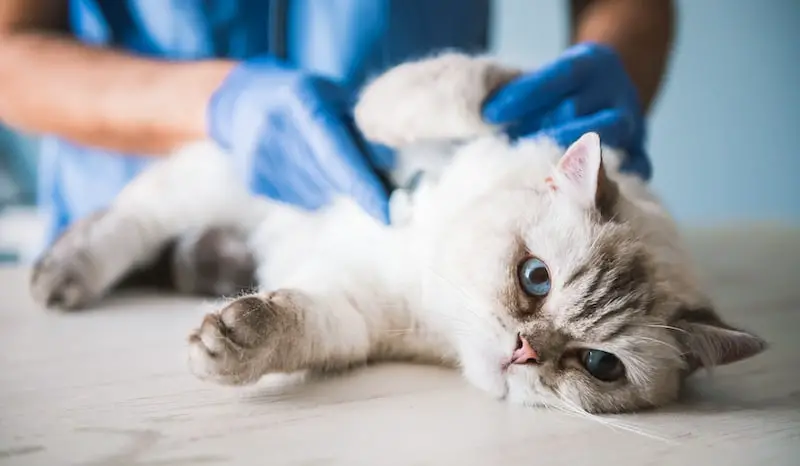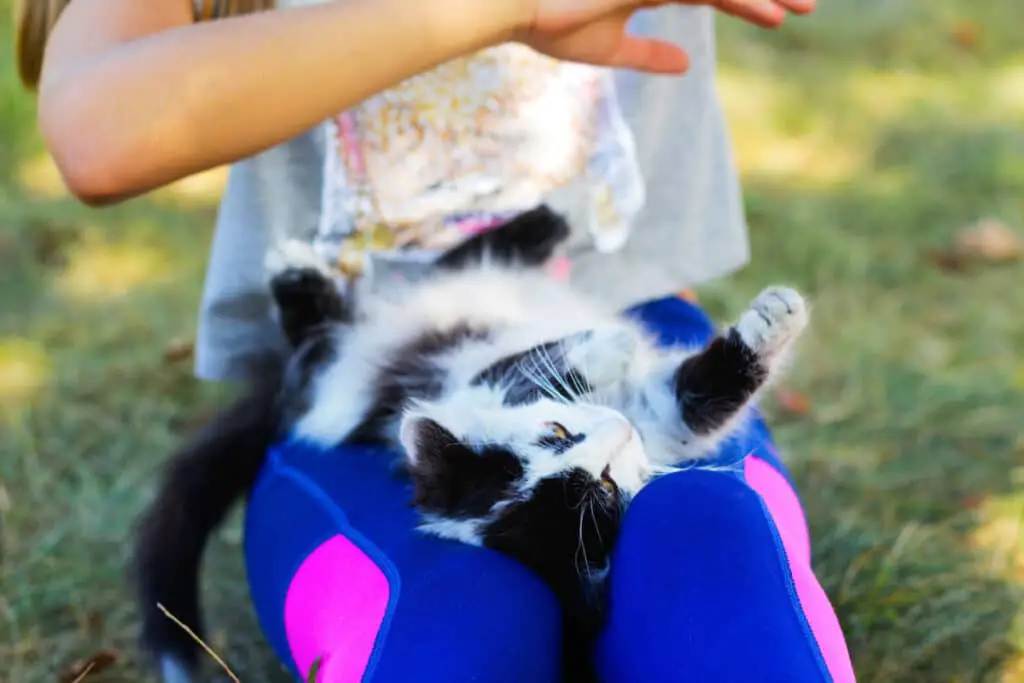Feline Hyperesthesia Syndrome (FHS) is a medical condition affecting the nervous system in cats. This disorder is also sometimes called rippling skin disorder due to the skin twitching and shuddering it causes, usually on the back or base of the tail. Some of the main symptoms of Feline Hyperesthesia Syndrome are skin twitching, abnormal vocalizations, and erratic behavior.
Symptoms of Feline Hyperesthesia Syndrome
Although the main symptoms of Feline Hyperesthesia Syndrome are skin twitching and rippling, there are some other signs of the disease you should be aware of. These include:
- Involuntarily rippling or twitching of the skin, particularly on the lower back, accompanied by biting and scratching at the affected area
- Loud and insistent meowing (often at night)
- Dilated pupils, glassy eyes
- Erratic racing in circles or back and forth
- Extreme sensitivity and discomfort from petting or any physical contact
- Seizures
All of these symptoms are a result of extreme skin sensitivity that is usually really uncomfortable. The distress caused by this skin disorder cause anxious, agitated behavior in your cat that’s not easy to sooth.
Some of these symptoms alone can just be a sign of an energetic and playful cat. In fact, a lot of people mistakenly misdiagnose their cat with Feline Hyperesthesia Syndrome when they just have an anxious or excitable cat. However, all of these symptoms taken together are a strong indicator of Feline Hyperesthesia Syndrome and should be verified by a vet.

Causes of Feline Hyperesthesia Syndrome
Feline Hyperesthesia Syndrome is a disorder caused by exposure to contaminants that affect the neurological health of a cat. In other words, certain chemicals can disturb the nervous system of the cat. Some of these substances include:
- Pansteatitis: This condition, caused by an excess of unsaturated fatty acids from a high-fish or imbalanced homemade diet, causes abnormal fatty deposits under a cat’s skin that can be painful. The uncomfortable fatty deposits create hypersensitivity in the thorax and abdomen, and a cat’s skin may twitch or ripple as a result.
- Brain Involvement: If a cat with FHS experiences seizures, the cause may stem from the brain. Infection, skull trauma, or tumors should be investigated by a veterinarian.
- Toxic exposure: Environmental or dietary heavy metals such as arsenic or mercury-containing foods or compounds can cause FHS. Flea dips, flea collars, or the ingestion of household cleaning agents and pesticides should also be considered.
- Flea Allergies: Itchy skin due to flea bites could be cause for erratic behavior in cats, and this potential cause should be relatively easy to rule out by examination of the skin under the coat.
At the end of the day, it can be really hard to figure out the cause of Feline Hyperesthesia Syndrome because it has so many potential causes.
Certain cat breeds have higher prevalences of Feline Hyperesthesia Syndrome, including Siamese, Burmese, Abyssinian, and Persian. Generally, symptoms begin to show within 1-5 years of age if a cat has Feline Hyperesthesia Syndrome.
Treatment for Feline Hyperesthesia Syndrome
Treatment for Feline Hyperesthesia Syndrome can be difficult as it has so many potential causes. Figuring out exactly how to treat it can involve a lot of trial and error. Some things that may help treat or prevent Feline Hyperesthesia Syndrome are:
- Provide plenty of exercise – a play wand or catnip can help with this
- Remove stressors in the environment
- Modify the diet to help your cat lose weight
- Prescription medication such as phenobarbital (anti-convulsant)
A vet will be able to give proper treatment options, including ones you can’t provide on your own such as prescription medications and specialized diet.
Can Feline Hyperesthesia Syndrome Be Cured?
Although you can do a lot to help alleviate the symptoms and severity of Feline Hyperesthesia Syndrome, it may not be completely cured in some cats. Every case of Feline Hyperesthesia Syndrome is different because the causes are different. However, with proper prevention and treatment, you can do a lot to improve the quality of life for your cat.














